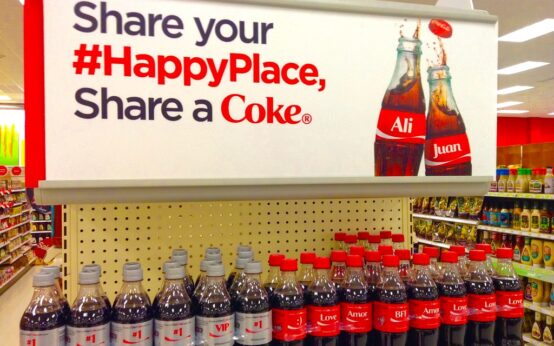Is email still even a relevant method of reaching your audience?
Email content marketing seems to have been around forever – from the humble weekly newsletter to all-singing, all-dancing strategic email with heavy segmentation and automation.
So if your email content marketing efforts aren’t ticking all of these boxes, it’s time to start paying a little more attention. While automation sounds scary and slightly Terminator-esque, it’s really not. And while it may not be as shiny and new as TikTok or Instagram Reels, email marketing has stood the test of time – and it’s not going away any time soon.
So let’s bust some jargon and dive into 6 advantages of (proper) email marketing – it’s time to take your email marketing up to pro level!
1. Email is an insanely cheap way to market yourself
To start with, it’s actually free! Signing up with a free provider like MailChimp is a great place to start – especially if your email marketing efforts currently extend to a Gmail list who all get the same monthly newsletter.
MailChimp is used by everyone from cottage industries to massive companies – you can manage up to 2,000 contacts in the MailChimp free account. You can send out 10,000 emails for free every month, and there are a tonne of free tools to help you build great-looking emails – and to start setting up automation. More on that later…
In the meantime, our recommendations are:
Beginner – Mailchimp
Start here for free and simple email marketing. When you outgrow it, you can work through their upgrade options, or transfer to:
Intermediate – MailerLite
More flexibility, more pro features. MailerLite is an excellent option of you start getting tens of thousands of subscribers (it’s very possible!).
Pro – HubSpot
Now you’re into CRM territory – where you’re thinking about managing customer lists, rather than just email marketing lists. HubSpot and the like help you track the customer journey, so you can see at what point they become a lead on your website – as well as where they came to your website from (e.g. social media), whether they purchased something on your site, and lots more.
Be aware – CRMs are aimed at businesses like ecommerce websites and consultancy firms. For them, there’s real value in a CRM as they can optimise their methods of attracting and retaining leads/customers. If you’re, say, a blogger interested in growing an audience, or you’re selling home-made goods on Etsy as a side hustle, a CRM platform probably isn’t worth the money.
2. It’s a great way to build a contact list that you own
As fantastic an idea as it is to build up your social media following, be aware of one key disadvantage; you do not own your Facebook fans. Or your Twitter followers. Nor do you own your audience on any other platform.
Those networks own the contact details of all of those fans. They own any content you post on it. They own the experience. So if one day Instagram (or whoever else) decides to shut down your page, or charge you a fortune to reach your followers, or updates its algorithm to make it harder to reach your audience with posts, there’s not much you can do. It means those hundreds, or thousands, or even millions of fans you’ve earned are no longer of much value to you – and vice-versa.
That’s exactly the situation many businesses found themselves in when Facebook introduced boosted posts – essentially charging people to reach the audience they thought they’d be able to reach for free forever.
With email marketing, that’s not the case. Whether you manage your contact list through Gmail, HubSpot, or anything inbetween, you own that contact list.
Sure, those email platforms have access to that list, but it’s you they’ve signed up to hear from. So if your email marketing provider updates its terms and starts charging you a fortune, you can take your list elsewhere. If there’s some mass migration towards some cool new social media network, you can find your contacts on there – because you can search for them by their email address. That won’t be the case if you build a huge following on TikTok and everyone suddenly leaves for something newer and shinier (just like when Millenials ditched Myspace for Facebook way back in 2007).
3. It’s a simple integration that adds real value to your website.
You’ve already worked hard to get visitors to your website – be it through SEO, social media, paid ads, or word of mouth (still by far the most effective type of marketing there is!). The people who’ve landed on your site and stuck around want to be there – so there’s a good chance they want to hear more from you.
Here’s where you have two choices: hope that they one day come back to your site again, or; give them the option to be notified next time you have something important to say that they may be interested in. That could be a new product launch, or it could be a new article for your blog.
By giving your audience the option to hear from you, you put the ball in your court. If they sign up for emails, you know they’re keen to hear from you – they’ve said so! As for everyone else, don’t worry – they’re just not that into you. For now, just focus on the ones who are. You can always think about optimising your content to try and convert more people to email subscribers at a later date.
So make sure your website includes options for visitors to hear from you again – placed in natural, logical places in your site content. Like this:
Mailchimp integration.
See what we did there? That’s a free integration from Mailchimp. It lets us remind all you wonderful people that we have loads more content you might find valuable – and you can choose to stay in the loop on via email. But we’ve also picked a super relevant section of the site to include it in. We’re talking about email marketing, after all!
For your website, that might be an area of a page where you’re talking about an upcoming product launch. Or some other exciting news you have in the works. That’s the place to get people signed up for your email list – don’t wait till they get to the end of the page. As soon as it’s relevant, take that opportunity to get them signed up.
4. It’s a ridiculously effective way to get an advantage over your competition
By deciding to do email marketing properly, you’re making a statement of intent. You’re no longer settling for the minimum – sending out that same tired old monthly newsletter to your entire subscriber base. You deserve much better than that – and so does your audience!
So while your competitors push out their boring email newsletter, you’re declaring that you have more to offer your audience. That you’re ready to embrace personalised marketing. And that you’re not afraid of terms like “segmentation” and “automation” that would send your competitors running back to Gmail. Speaking of which…
5. You can segment and automate your communication – it’s easier AND more effective than doing it manually
Segmentation and automation are neither difficult to implement, nor scary to embrace.They’re proven methods of ensuring your audience get more out of your emails. And that means they’re more likely to take that action you want them to take – like visiting your latest article, or signing up for a product or service.
So what exactly is automation? And what about segmentation?
Put simply, automation is exactly what it sounds like. It takes the manual leg work out of emailing your subscriber base.
For example, let’s say you want to email all of your customers with a special offer on their birthday. Rather than keep some huge insane list with all of your customers’ birthdays on it, and then setting yourself reminders to email them every year, you can create an automation.
The email platforms make this all very simple and user-friendly. But in the back end, they’re telling their data base to recognise when today’s date = customer’s birthday, and then send an email you’ve already crafted to offer them a birthday discount or special offer (for example). Of course, that depends on you having a method of capturing a person’s birthdate somewhere on your site (common if you sell alcoholic beverages, for example).
Segmentation works in a similar way. Say your site does sell alcoholic beverages. And not only do you want to email people on their birthday, but you also want to split them up by age group – because you know the older end like a heady stout, while the younger ones prefer a hoppy IPA.
So you can set up a segment called “Stout fans” and another called “IPA fans.” Everyone born before 1st Jan 1975 goes into the stout segment, while everyone born after goes into the IPA segment. Now, when they get their birthday email, the stout fans get offered a free bottle of stout, while the IPA fans get nothing because IPA is disgusting.
Fine, they get an IPA.
That’s a ridiculously reductive and simplistic example – you can have tonnes of different segments set up, with a wealth of different automations triggering all sorts of emails. But it does demonstrate the value of segmenting your audience, automating your email sends, and combining the two for even better results.
bUt iSnt tHaT A BiT iMpErSoNaL??
Nope. No it is not. In fact, it’s the exact opposite. Consider the difference:
Dear customer,
We’re emailing to tell you all about our great new deal on novelty vacuum cleaners. All customers get 15% off their next purchase at their nearest participating store – so come on down!
Or:
Hi David!
We know you bought a novelty vacuum from us back in 2012 – so you’re probably due for a new one! To say thanks for being a loyal customer, we’re offering you a special 15% discount at our London store – just a few minutes from your house!
Some might argue that’s a little too personal. But the beauty of email is you get the data to make decisions like that.
All of the best email marketing platforms (MailChimp, MailerLite etc) allow you to run tests – so you could see whether the Davids of the world find it a bit too creepy that you know where they live.
In that case, you could prove your theory by running a test where 50% of your segment get one version of an email, and the other 50% get a very similar one, with a small difference. That’s called an A/B test – because you’re running version A of an email (“I know where you live…”) against version B (“I know where you live…but I’m choosing not to use that information right now.”). Which is somehow weirdly less creepy.
The big email marketing platforms have simple tools that can help you set up these tests. Just bear in mind two quick things: If you have a small email list, you might not have enough people in the test to rule out random chance influencing the results (called “statistical significance”); and make sure your two versions only have a small difference (like changing a word or two in a headline). If you change too many things in the B version, you won’t know what worked and what didn’t.
6. It’s a medium through which incentivisation still works
That personalised 15% offer we just threw David’s way? That’s a great example of incientivising an email contact to come to your site (or your weird London novelty vacuum store).
But incentivisation also works the other way around. By offering the right incentiviation for website visitors to sign up for emails – like prizes and discounts – you can quickly grow a highly relevant email marketing list. That’s not the case on all platforms…
Social media is taking a clobbering in this article – but this is an important point to make:
Remember when Facebook competitions were all the rage? “Tag a mate to win” etc? Those types of campaign can still work really well. But since Facebook updated its competition T&Cs (no more tagging mates allowed) and with organic post reach continuing to decline, it can be more difficult to get the desired result than it was in the past.
On the flip side, incentivising people to sign up to your email marketing list on your website is still as effective as ever. With the right type of incentivisation (prizing, discounts etc), you can quickly grow an email marketing list from scratch.
Perhaps you could give away one novelty vacuum per month to subscribers – and then offer a 5% discount to all others? Or you could just not sell novelty vacuum cleaners like a normal person.
So, if you’re not on a pro email marketing platform, it’s time to get on board. Sign up for free, and start trying out some of the tips we’ve covered here!



 10 amazing content marketing examples
10 amazing content marketing examples  Inbound content marketing – what is it and how does it work?
Inbound content marketing – what is it and how does it work?  The problem with defining “content strategy”
The problem with defining “content strategy”  How effective is content marketing?
How effective is content marketing?  Is AI a content marketer’s friend or foe?
Is AI a content marketer’s friend or foe?  What is attraction content marketing?
What is attraction content marketing?